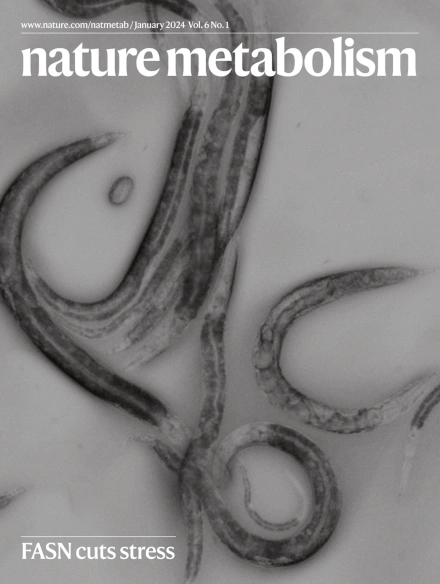识别驱动骨骼肌生长的阻力运动特异性信号通路
IF 20.8
1区 医学
Q1 ENDOCRINOLOGY & METABOLISM
引用次数: 0
摘要
耐力和阻力运动导致不同的功能适应:前者增加有氧能力,后者增加肌肉质量。然而,驱动这些适应的信号通路还没有被很好地理解。在这里,我们确定了受耐力和阻力运动不同调节的磷酸化事件。利用男性参与者单侧运动模型和深度磷蛋白组学分析,我们发现涉及MKK3b/6、p38、MK2和mTORC1的信号通路的延长激活在抵抗运动中特异性发生。在男性和女性参与者的随访研究中发现,阻力运动诱导的MKK3b激活与诱导蛋白质合成高度相关(R = 0.87)。此外,我们发现在小鼠中,MKK3b的遗传激活足以通过p38、MK2和mTORC1诱导信号传导,同时增加蛋白质合成和肌纤维大小。总的来说,我们确定了驱动抗阻运动促进生长作用的信号通路的核心成分。本文章由计算机程序翻译,如有差异,请以英文原文为准。


Identification of a resistance-exercise-specific signalling pathway that drives skeletal muscle growth
Endurance and resistance exercise lead to distinct functional adaptations: the former increases aerobic capacity and the latter increases muscle mass. However, the signalling pathways that drive these adaptations are not well understood. Here we identify phosphorylation events that are differentially regulated by endurance and resistance exercise. Using a model of unilateral exercise in male participants and deep phosphoproteomic analyses, we find that a prolonged activation of a signalling pathway involving MKK3b/6, p38, MK2 and mTORC1 occurs specifically in response to resistance exercise. Follow-up studies in both male and female participants reveal that the resistance-exercise-induced activation of MKK3b is highly correlated with the induction of protein synthesis (R = 0.87). Additionally, we show that in mice, genetic activation of MKK3b is sufficient to induce signalling through p38, MK2 and mTORC1, along with an increase in protein synthesis and muscle fibre size. Overall, we identify core components of a signalling pathway that drives the growth-promoting effects of resistance exercise. This study demonstrates that the MKK3b/6 signalling pathway drives the skeletal muscle growth-promoting effects of resistance exercise.
求助全文
通过发布文献求助,成功后即可免费获取论文全文。
去求助
来源期刊

Nature metabolism
ENDOCRINOLOGY & METABOLISM-
CiteScore
27.50
自引率
2.40%
发文量
170
期刊介绍:
Nature Metabolism is a peer-reviewed scientific journal that covers a broad range of topics in metabolism research. It aims to advance the understanding of metabolic and homeostatic processes at a cellular and physiological level. The journal publishes research from various fields, including fundamental cell biology, basic biomedical and translational research, and integrative physiology. It focuses on how cellular metabolism affects cellular function, the physiology and homeostasis of organs and tissues, and the regulation of organismal energy homeostasis. It also investigates the molecular pathophysiology of metabolic diseases such as diabetes and obesity, as well as their treatment. Nature Metabolism follows the standards of other Nature-branded journals, with a dedicated team of professional editors, rigorous peer-review process, high standards of copy-editing and production, swift publication, and editorial independence. The journal has a high impact factor, has a certain influence in the international area, and is deeply concerned and cited by the majority of scholars.
 求助内容:
求助内容: 应助结果提醒方式:
应助结果提醒方式:


